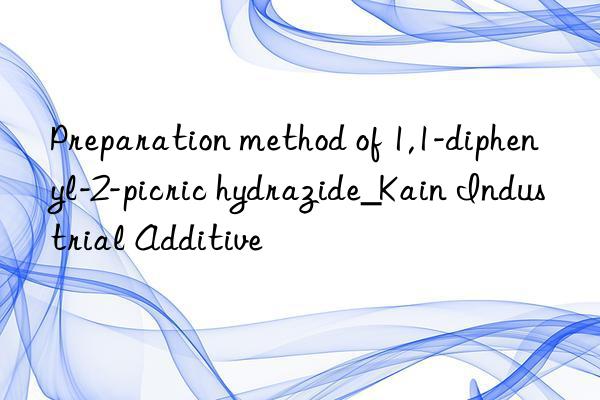
Background and overview[1]
1,1-diphenyl-2-picric hydrazide can be used as a pharmaceutical synthesis intermediate. If 1,1-diphenyl-2-picric hydrazide is inhaled, move the patient to fresh air; if there is skin contact, take off contaminated clothing and wash the skin thoroughly with soap and water. If you feel discomfort, Seek medical attention; if eye contact occurs, separate eyelids, rinse with running water or saline, and seek medical attention immediately; if ingested, rinse mouth immediately, do not induce vomiting, and seek medical attention immediately.
Preparation[1]
The preparation of 1,1-diphenyl-2-picric hydrazide is as follows: add 18.0g (0.122mol) anhydrous sodium acetate and 22.1g (0.1mol) hydrochloride a, α-diphenylhydrazine in Dissolve with 150ml 98% acetic acid while heating. To the solution cooled to 30-40°C, 24.8 g (0.1 mol) of picryl chloride was added. Add the mixture to hot water and bathe for 30 minutes with constant stirring. After completing the process, cool the reaction mass to room temperature and pour it into water (1000-1200ml), filter out the reddish-brown material, wash it on the filter with a small amount of dilute hydrochloric acid (2-5% solution) ethanol, and then dry it. After drying at 120°C, 29.8 g of almost pure product 1,1-diphenyl-2-picric hydrazide was obtained, corresponding to 91.3% of the theoretical value. After recrystallization from ethyl acetate, 169-171°C was obtained.
Apply[2]
Preparation of 1,1-diphenyl-2-picric hydrazide nanoparticles: Dissolve 1,1-diphenyl-2-picric hydrazide (0.01mmol) in tetrahydrofuran (THF, 1mL) under an argon atmosphere , a dark purple stock solution formed. Inject 100 μL of this stock solution into nanopure water (18.2 MΩ, 5 mL) at room temperature (25 °C) with vigorous stirring. After injection of the 1,1-diphenyl-2-picric hydrazide stock solution, inject 1.8 mL of aqueous gelatin solution (2 wt%) into the growth solution and stir for another 5 min, with the growth time varying from 0 to 2 h. To synthesize a growth time of 0 hours, 100 μL of 1,1-diphenyl-2-picric hydrazide stock solution and 1.8 mL of 2 wt% gelatin aqueous solution were simultaneously injected into a flask containing 5 mL of nanopure water (18.2 MΩ), and then the resulting solution It is stirred for 5 minutes. In this way, the final 1,1-diphenyl-2-picric hydrazide nanoparticle size depends entirely on the change in growth time, and the resulting 1,1-diphenyl-2-picric hydrazide nanoparticles are separated by centrifugation. separated from the growth solution, then redispersed in nanopure water and centrifuged again.
Main reference materials
[1]US20110031430.Synthesisofwater-solubleorganicnanoparticlesasEPRstandard
[2]SU487878.α,α-Diphenyl-β-picrylhydrazine

 微信扫一扫打赏
微信扫一扫打赏

